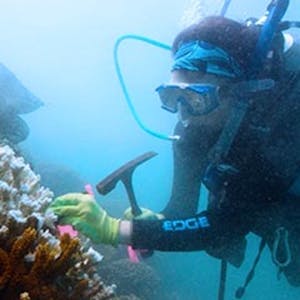Embark on an immersive journey through the intriguing world of Marine Biology with this comprehensive course offered by the American Museum of Natural History. Delve into the diverse ecosystems of the oceans, from the sunlit surface to the mysterious depths, and discover the remarkable adaptations of marine organisms.
Uncover the evolutionary history of ocean life, the interactions between species, and the current threats facing marine biodiversity. Engage with real scientific data and insights from pioneering researchers, gaining a deep understanding of how life has adapted to diverse ocean habitats and its significance to the world.
By the end of this course, you'll have gained a profound appreciation for the complexities of ocean life and its relevance to our planet's future.
Certificate Available ✔
Get Started / More Info
Embark on a fascinating exploration of Marine Biology through five modules that delve into the adaptations, interactions, and significance of ocean life to our planet's future.
Module One introduces the course and explores the adaptations of organisms to living in the ocean. Gain insights into the biodiversity of the ocean, threats to marine biodiversity, and intriguing case studies on marine animals that glow.
Module Two delves into the physical properties of the marine environment and their impact on life. Discover how organisms utilize tides, currents, and water motion to their advantage, and explore a captivating case study on animals that live in mucus houses.
Module Three focuses on species interactions in the ocean, covering topics such as keystone species, trophic cascades, flow of matter and energy in marine ecosystems, and patterns of interactions among marine species.
Module Four presents a detailed case study on the giant blue whales, exploring their evolution, feeding behavior, and the significance of their immense size in the marine ecosystem.
Module Five highlights the importance of marine ecosystems, examining super corals, the present state of sharks, and the ongoing efforts of conservation biologists to protect and preserve marine biodiversity.
Solar Energy for Engineers, Architects and Code Inspectors equips learners with a comprehensive understanding of solar photovoltaics, system design intricacies,...
This course equips learners to understand and mitigate the impact of natural disasters on communities, covering geological and hydro-meteorological hazards, risk...
Renewable Energy: Fundamentals and Job Opportunities Prepare for a career in renewable energy with an in-depth understanding of clean energy market segments, sustainability...
PepsiCo's Water Stewardship course offers comprehensive training on water management, corporate stewardship, and the impact of water on supply chains to equip learners...